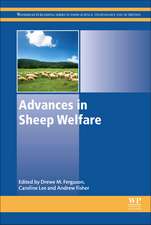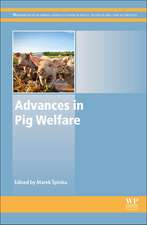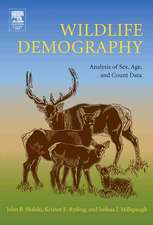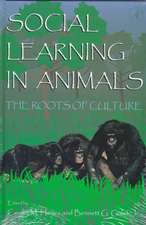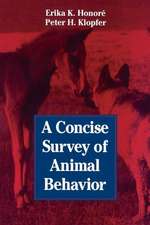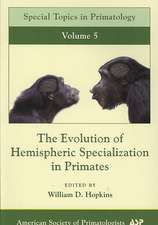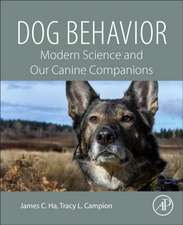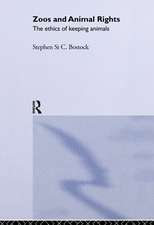Radio Tracking and Animal Populations
Editat de Joshua Millspaugh, John M. Marzluffen Limba Engleză Hardback – 14 aug 2001
Preț: 716.58 lei
Preț vechi: 981.61 lei
-27% Nou
Puncte Express: 1075
Preț estimativ în valută:
137.16€ • 149.04$ • 115.29£
137.16€ • 149.04$ • 115.29£
Carte tipărită la comandă
Livrare economică 21 aprilie-05 mai
Preluare comenzi: 021 569.72.76
Specificații
ISBN-13: 9780124977815
ISBN-10: 0124977812
Pagini: 496
Dimensiuni: 152 x 229 x 36 mm
Greutate: 0.93 kg
Ediția:and.
Editura: ELSEVIER SCIENCE
ISBN-10: 0124977812
Pagini: 496
Dimensiuni: 152 x 229 x 36 mm
Greutate: 0.93 kg
Ediția:and.
Editura: ELSEVIER SCIENCE
Public țintă
Researchers, graduate students, and advanced undergraduates interested in animal ecology and demography, wildlife biology, conservation biology, vertebrate zoology and ecology.Cuprins
Contributors
Preface
Part I: Introduction
Chapter 1. Historical and Practical Perspectives
The First 20 Years
The Third Decade
The 1990s
The Future
Part II: Experimental Design
Chapter 2. Experimental Design for Radiotelemetry Studies
Critical Questions for Experimental Design
Ultimate Design: Demographic Responses to Landscape Conditions and Resource Selection
Summary
Chapter 3. Effects of Tagging and Location Error in Wildlife Radiotelemetry Studies
Effects of Transmitters on Animals
Location Error
Testing and Reporting Error Estimates
Summary
Part III: Equipment and Technology
Chapter 4. Recent Telemetry Technology
Power Supplies
Microcontrollers
Coded Transmitters
Sensors
Archival Tags
Satellite Telemetry Systems
Hyperbolic Telemetry Systems
Implications for Data Analysis
Implications for Researchers
Future Directions
Part IV: Animal Movements
Chapter 5. Analysis of Animal Space Use and Movements
Using Home Range Estimators to Analyze Animal Space Use
Analysis of Site Fidelity
Analysis of Animal Interactions
The Future: Modeling the Movement Process
Summary
Chapter 6. Fractal-Based Spatial Analysis of Radiotelemetry Data
Multiscale Analysis of Radiotelemetry Data
Fractal Analysis of Spatial Pattern
Modeling Fractal Patterns: Lévy Flights
Example: Sage Grouse Location Data
Future Directions
Summary
Chapter 7. Estimating and Visualizing Movement Paths from Radio-Tracking Data
Sources of Variation
Improving Accuracy and Precision
Demonstration
Visualizing Paths
Future Directions
Conclusions
Part V: Resource Selection
Chapter 8. Statistical Issues in Resource Selection Studies with Radio-Marked Animals
Common Assumptions in Resource Selection with Radio-Marked Animals
Inference from Resource Selection Studies
Study Designs
Scale and Resource Availability
Resource Use
Variable and Model Determination
Independence Issues
Analyzing Resource Use Relative to Availability
Future Directions
Summary
Chapter 9. Accounting for Variation in Resource Availability and Animal Behavior in Resource Selection Studies
Methods
Case Study: Summer, Diurnal, and Microsite Resource Selection by Elk in South Dakota
Results
Discussion
Summary
Chapter 10. Using Euclidean Distances to Assess Nonrandom Habitat Use
Desirable Characteristics of a Habitat Analysis Tool
Habitat Analysis with Euclidean Distances
Example of the Procedure Applied to Fox Squirrel Data
Comparison with Other Techniques
Benefits of the Euclidean Distance Approach
Research Needs
Future Directions
Summary
Chapter 11. Effect of Sample Size on the Performance of Resource Selection Analyses
Study Area and Technologies
Methods
Results
Discussion
Summary
Chapter 12. High-Tech Behavioral Ecology: Modeling the Distribution of Animal Activities to Better Understand Wildlife Space Use and Resource Selection
Space Use
Resource Selection
Improving Our Approach to the Study of Wildlife Radiotelemetry
Summary
Part VI: Population Demographics
Chapter 13. Population Estimation with Radio-Marked Animals
Direct Mark-Resight Estimation
Sightability Models
Correcting Bias of Grid Trapping Estimates
Future Developments
Summary
Chapter 14. Analysis of Survival Data from Radiotelemetry Studies
Approaches for Estimating Survival
Areas of Concern
What Must We Do?
Future Directions
Summary
Part VII: Concluding Remarks
Chapter 15. Radio-Tracking and Animal Populations: Past Trends and Future Needs
Past Trends
Future Needs
Appendix A. A Catalog of Software to Analyze Radiotelemetry Data
Preliminary Analyses
Animal Movements
Resource Selection
Demographics
General Statistics
Availability of Software
Equipment Vendors and Distributors
Literature Cited
Subject Index
Recenzii
"This book is an important reference for any biologists' bookshelf." --SOUTHEASTERN NATURALIST (May 2006) "This book is a must reference for all scientist that work with telemetry or are contemplating telemetry projects. It should be used from start to finish...Academic Press is to be commended for continuing and updating its wildlife telemetry offerings." --THE CANADIAN FIELD-NATURALIST (2002) "...I have no doubts that this book will warrant a place in one's library, especially to assist graduate students in the design, planning, and delivery of radiotracking studies, as well as in the analysis or radiotracking data." --JOURNAL OF MAMMALOGY (February 2003) "...is a valuable book that should be of interest to a wide readership. ...I highly recommend this book for individuals conducting radiotelemerty studies." --Barry R. Noon for THE AUK (April 2002) "If I was embarking on a radio tracking study I would start with this book since it is concise in the basics, clearly highlights many potential pitfalls and stimulates deeper thinking about what can be achieved with tracking studies." --Jeremy Lindsell for IBIS (2002) "...wildlife biologists, managers and students seeking a laudable compilation of readable synopses will find exactly that...Various contributors have done an admirable job of placing methods in context with one another and distilling the fundamentals of relatively complicated statistical techniques." --Geln A. Sargaent, U.S. Geological Survey Northern Prairie Wildlife Research Center for ECOLOGY (2002)

